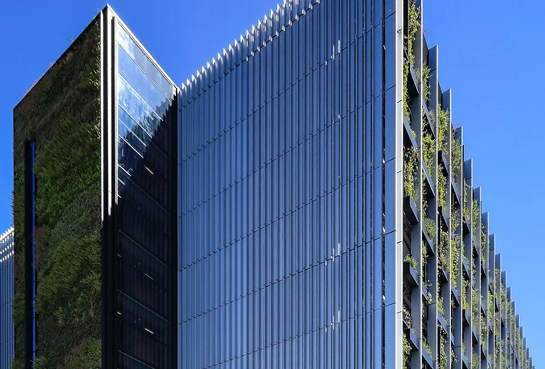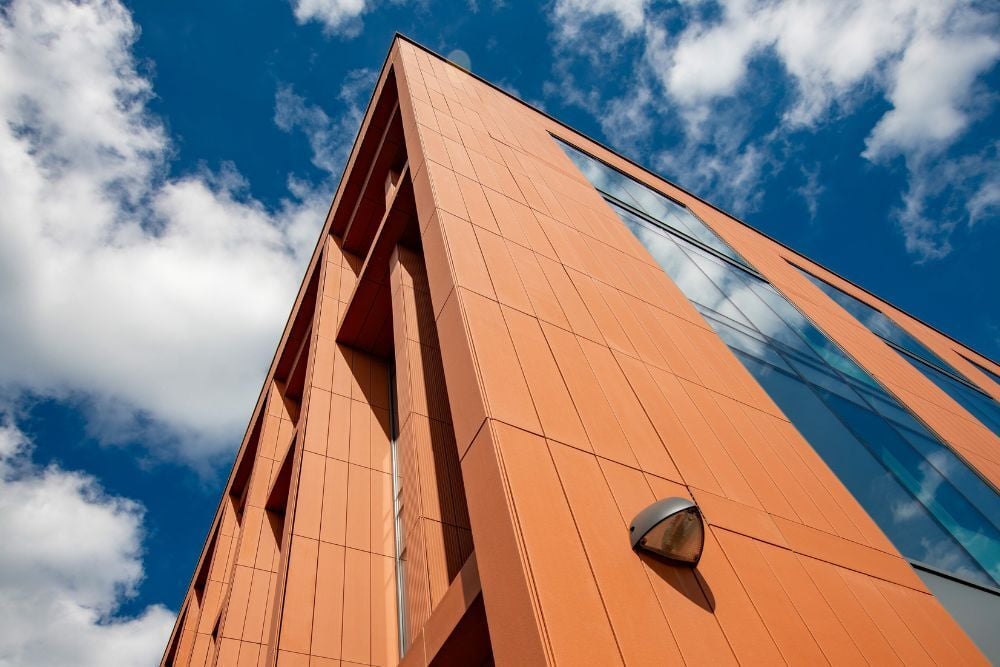
Latest
News
Maple discusses the role of material selection in reducing embodied carbon

Topics
- About Maple (100)
- Car Parks (90)
- Office and Retail (47)
- Government (39)
- Rainscreen (36)
- Louvres (30)
- Education (24)
- Residential (24)
- Brise Soleil (22)
- Health (20)
- HSEQ (18)
- Commercial Blinds (16)
- Sustainability (15)
- Data centres (10)
- Pre-Construction services (10)
- Architectural facade (7)
- North West (2)
As part of Net Zero week, Maple have looked into the role of material selection in reducing carbon emissions.
Embodied carbon refers to the total amount of carbon dioxide (CO2) or greenhouse gas emissions released throughout the entire lifecycle of a building. This includes emissions from raw material extraction, transportation, manufacturing of components, construction, ongoing use, maintenance, and ultimately demolition.
It differs from operational carbon, which is associated with the energy used to heat, light, and operate a building. Embodied carbon encompasses all the hidden emissions that occur before a building even begins to function and throughout its lifecycle.
The impact of embodied carbon is huge yet often overlooked. Traditional façade materials often carry a significant carbon footprint due to the energy-intensive processes required for their production and distribution. For example, cement production alone accounts for around 7% of the world's total CO2 emissions, making it a major contributor to the embodied carbon in the built environment.
Architectural façades, brise soleil, and rainscreen cladding are components where material choice can significantly impact the total embodied carbon. By opting for materials with lower embodied carbon, architects and engineers can substantially reduce the overall carbon footprint of their projects.
Timber
Timber is one of the most established and effective low-carbon building materials, due to its natural ability to store carbon during tree growth. This means that using timber in construction actively removes and stores atmospheric CO₂ for the lifetime of the building, making timber one of the few structural materials that can have a carbon-negative contribution during its early life cycle.
When harvested sustainably, solid timber such as pine, spruce, and oak offers a renewable alternative to high-carbon materials like steel and concrete.
Aluminium
When sourced in its original form, refined from bauxite ore, aluminium has a very high embodied carbon footprint, mainly due to the high energy requirements of the smelting process. However, aluminium also holds one of the highest potentials for circular reuse among construction materials. When made from recycled aluminium, often referred to as "secondary aluminium," the embodied carbon can drop by up to 95% compared to primary aluminium. Also, the energy embedded in aluminium during its production remains within the material and is reactivated during recycling or repurposing, ensuring it is conserved rather than lost or wasted.
To learn more about the journey of aluminium, take a look at 'Where does raw aluminium come from?' on our Knowledge Centre.
terracotta
In terms of embodied carbon, terracotta falls moderately low when compared to cement or aluminium, particularly because it is made from natural clay that requires relatively low levels of processing before firing. This simplicity gives terracotta a lower embodied carbon profile than many synthetic or processed materials, such as virgin aluminium. It does not rely on intensive mining, chemical treatments, or complex industrial processes like cement production or metal smelting. However, the kiln firing process does contribute to its carbon footprint due to the high temperatures needed to heat the clay.
Overall, the environmental performance of terracotta varies depending on the energy source used during firing (e.g., fossil fuels vs. renewable energy) and whether it's locally sourced or imported over long distances.
As we celebrate Net Zero Week, it’s also important to consider how businesses can contribute to the wider adoption of net-zero strategies. To explore how Maple is progressing towards net zero, read the article Sustainability in Construction: From Complexity to Simplicity.
